RAILWAYS AROUND RASTRICK
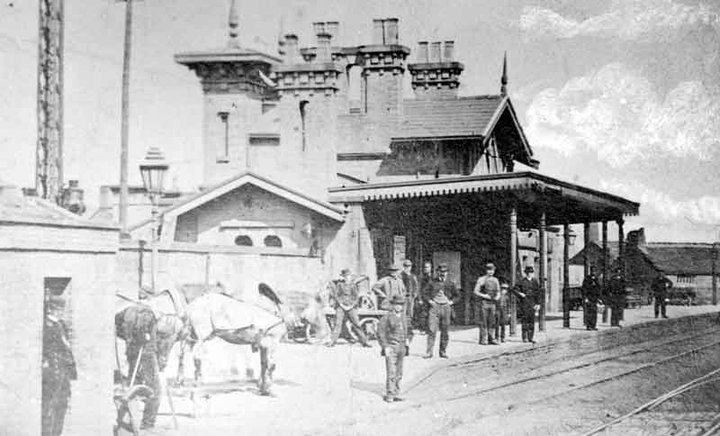
RAILWAYS AROUND RASTRICK
This is a transcript of a talk given by Roy Shakespeare, a member of the Rastrick Local History Group, to the other group members in May 2019.

The Manchester and Leeds Railway Company opened its station in Rastrick on October 5th1840.
Experimental horse drawn trains had visited the station before this but October 5th is the date when steam powered engines drew trains of carriages through Rastrick.
A group of gentlemen had formed a committee as early as 1825 with a view to construct a railway to connect Manchester, Rochdale, Todmorden, Halifax, Bradford, Huddersfield and Leeds.
The economic and political situation in the country was not good at this time and the early vision was not carried through.
Some five years later the Manchester and Leeds Railway Company was formed and really made progress to have plans approved by an Act of Parliament to have the line constructed. This would ensure that both the route was viable and that local interests were observed.
There were two routes originally envisaged but the one selected by George Stephenson was adopted. Stephenson was a largely self- taught and semi-literate railwayman whose earlier successes gained him much respect and influence. He was appointed as Chief Engineer and his assistant was his former apprentice Thomas Longridge Gooch who was the eldest brother of Daniel Gooch of the Great Western Railway fame.
Early attempts to have the necessary Act passed were thwarted by the canal companies – Rochdale Canal, Calder and Hebble and the Aire and Calder Navigation who would lose much trade and the proposed route of the railway would follow their waterways. Local landowners were also opposed to the railway crossing their land.
Eventually the Act was passed in June 1836 and work was started to put the fine detail on the route, to purchase the land and to appoint contractors to carry out the work.
The route from Oldham Road in Manchester followed the line of the Rochdale Canal and the bridges over the canal are still with us. The route continues to Littleborough where it was necessary to excavate the Summit Tunnel which was 2,885 yards long. Then the line continued to Todmorden, Hebden Bridge and Sowerby Bridge. At this point the route followed the River Calder and the Calder and Hebble Canal via Elland, Rastrick, Thornhill (for Dewsbury). Continuing on through Wakefield to Goose Hill where there was a junction with the North Midlands Railway. From here the railway ran over the North Midland’s metals through Normanton and on into Leeds.
Although Stephenson was the Chief Engineer it was Thomas Gooch who did most of the work, negotiated land purchases and ensured that the local contractors performed their duties correctly.
There were, of course, many difficulties in constructing what was the first Trans-Pennine route. The Summit Tunnel was difficult, a viaduct in Wakefield collapsed while under construction and the embankment at Cromwell Bottom had to be reinforced. This work, designed by Stephenson, or his later replacement, can be seen from Cromwell Bottom Nature Reserve.
The local contractor was John Woodward and he was responsible for constructing the railway from Tag Lock to Bradley Wood.
The railway opened in two sections. The first of these from Oldham Road in Manchester to Littleborough in July 1839 and the second section from Leeds to Hebden Bridge on October 5th 1840.
So, we return to the opening statement that the Manchester and Leeds Railway opened its station in Rastrick on October 5th 1840. The first train to arrive was from Hebden Bridge and was driven by the engineer Thomas Gooch.
There were large crowds to witness the event and the train passed on to Thornhill where it met the train from Leeds. This had left at 7.53 a.m. being operated by the North Midlands Railway Company. There were insufficient coaches to cope with the high number of people who had bought tickets therefore the passengers climbed onto the roof of the carriages and sat there for the journey, ducking under the bridges and tunnels
The train eventually proceeded to Hebden Bridge where it arrived at 10.49 a.m. a distance of 37 miles from Leeds, which it covered in 2 hours 56 minutes.
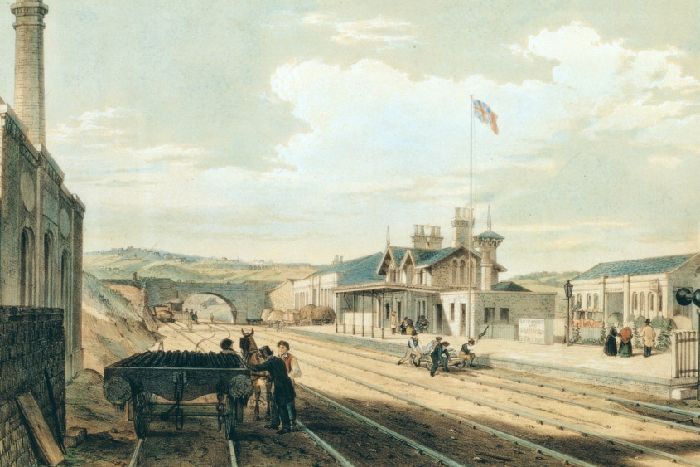
There were very few rules and regulations in the early days of locomotion and these evolved over the years largely by trial and error or more precisely by accidents, fatalities and poor practice. There was nothing to prevent the roof riders other than the number which the engine could cope with.
On the second train from Brighouse to Hebden Bridge the number of passengers on the roof prompted an official to bring into service a cattle truck and attached this to the back of the train. The people on the roof were encouraged to take standing room in the truck which was quietly detached from the train leaving those passengers without a trip which was much to the amusement of the crowd of onlookers.
Following the madness of the first day a regular service of three trains a day operated in each direction with no service on Sundays.
The station in Rastrick was described as elegant and built somewhat in the Chinese style. It had a long, low platform and with covered accommodation, a booking hall and waiting room at least for the first-class passengers.
In 1840 it was one of the most important stations on the line as it was the nearest point to Bradford. The station was boarded as Brighouse and Bradford Station. Passengers for Bradford would either complete their journey by coach or on foot.
The main line had also avoided both Halifax and Huddersfield. Passengers for Halifax would alight at Elland and for Huddersfield either at Cooper Bridge or Brighouse.
Apart from the use by passengers, goods traffic was also important to the station and along with Hebden Bridge it was a major watering point for the engines. Although trains could take on water at Rochdale, Sowerby Bridge or Wakefield this practice was discouraged as supplies were more expensive. An engine would use 1,500 gallons of water in a journey from Manchester to Leeds. The M & L never had water troughs laid between the tracks and these were only installed at a later date by the Lancashire and Yorkshire Railway Company.
The Summit Tunnel was completed in December 1840 and passenger services for the entire route started on 1st March 1841. There were no grand opening ceremonies to mark the occasion possibly due to the time of year but bands played at Summit Tunnel and Ossett and a special train was run for the directors of the company with a party of friends and George Stephenson and Thomas Gooch.
On Monday to Saturday there were ten trains a day each way between Manchester and Leeds with a reduced service on Sundays to placate the Lord’s Day Observance Society who would have preferred there to be no service. This practice was soon put aside and the company ran whatever service they wanted as well as excursion trains on Sundays.
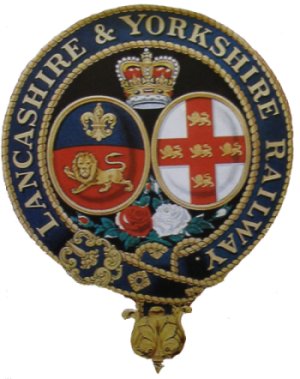
The company name was changed to the Lancashire and Yorkshire Railway (the Lanky) in 1847.
By the 1860’s Brighouse Station was well past its use by date and was considered to be something of a joke locally. The original station didn’t have a bridge and there were a number of fatalities when passengers crossing the tracks mis-judged the speed of an oncoming train.
A petition was raised in 1863 for improved facilities but the L & Y resisted efforts to make any changes.
A joint petition from the local boards in 1866 asking for improved accommodation, a widening of the platforms and new waiting rooms also had no response.
In his book ‘The Trains We Loved’, C. Hamilton Ellis tells us that back in the 1870’s, ‘The Lanky was a fearsome railway, ancient in equipment, dreary in its stations, hopelessly inadequate and congested in its important station layouts. There were no brilliant colour schemes, no names to the engines which were painted in black. The carriages had a two-colour finish brown above and dark brown below. Then Barton Wright began and Sir John Aspinall completed a revolution in its standard of locomotive power – the services were smartened up in speed and efficiency’.
This new policy was obviously continued into the stations as in 1872 a new station was built in Rastrick alongside the original which eventually became the Goods Station.
Pressure was also being applied to provide a more direct service to Bradford but the Lancashire & Yorkshire were reluctant to spend on a new line. Work on this project was slow but eventually a service was provided from Brighouse Clifton Road via Bailiff Bridge to join the main line from Sowerby Bridge to provide the link into Bradford. This route operated from 1881 until Brighouse Clifton Road Station closed in 1931.
In the mean-time Brighouse and Rastrick Station was relocated with an entrance from Gooder Lane. At some stage a siding was provided on the Halifax side of the station for Marshalls and on the other side there was a bay for services to Huddersfield. The station opened on May 1st 1891 and remained in use until services were withdrawn on January 5th1970. There were also sidings and goods yards which were accessed from Birds Royd Lane.
A mail train could complete the journey from Manchester to Leeds in 2 hours and 50 minutes whilst a local train, stopping at every station, took between three and three and a half hours.
Victoria Station in Manchester was built of stone from the Brighouse area and was opened on 1st January 1844. The station was used jointly by the Manchester and Leeds Railway and the Liverpool and Manchester Railway.
Brighouse Station lost much of its importance when a more direct service was opened from Sowerby Bridge to Halifax in 1845 the route continuing via Low Moor to Bradford and then on to Leeds.
The Manchester and Leeds Railway was a very ambitious company with a declared aim of providing a service from Liverpool to Hull. By a series of aggressive mergers, new builds and joint workings it did achieve this objective.
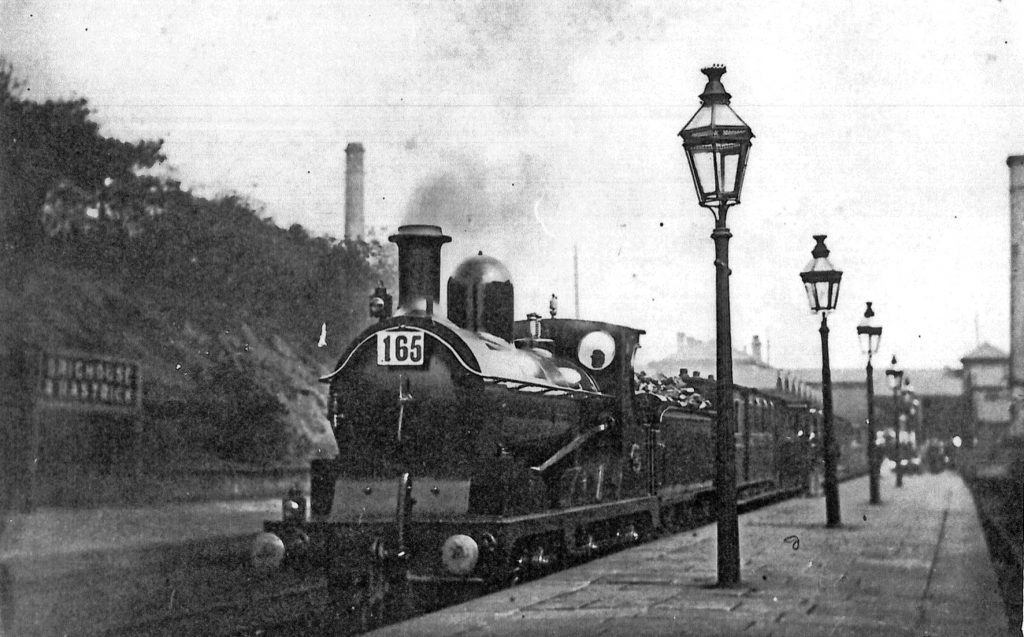

Brighouse station in 1922 (left) and in 1927 (right) where a locomotive dating from 1890 was still in use.

During this time the Lancashire & Yorkshire became the third largest operating company in Northern England. The company merged with the London & North Western Railway on January 1st 1922 and in 1923 was grouped with others to become the London, Midland & Scottish Railway.
When the railways were nationalised in 1948 Brighouse became part of the North Eastern Region of British Railways.
After the second world war the railways continued to lose both passenger and freight traffic to the road network and a massive overhaul of the system was undertaken by Dr Richard Beeching with reports issued in 1963 and 1965.
With the number of passengers using Brighouse Station falling it was decided that the station would close on January 5th 1970 although goods traffic still used the line. The large sidings and goods yard between Birds Royd Lane and the through line also fell into disuse with the 1892 station being demolished and the sidings were redeveloped into the industrial estate which is still in use.
Following much local pressure the rail service was re-introduced with a station providing minimal facilities on May 28th 2000. Services were gradually improved and in 2009 Grand Central (a subsidiary of Deutschebahn) introduced a direct service to Kings Cross Station in London.
The Friends of Brighouse Station was formed in 2014 and from 2015, with sponsorship from local businesses, began to improve the appearance of the station with the placing of flower tubs, planters and borders which help to make a journey more pleasurable.
The platforms were extended in 2018 to enable longer trains to use the station and in 2019 new shelters were installed.
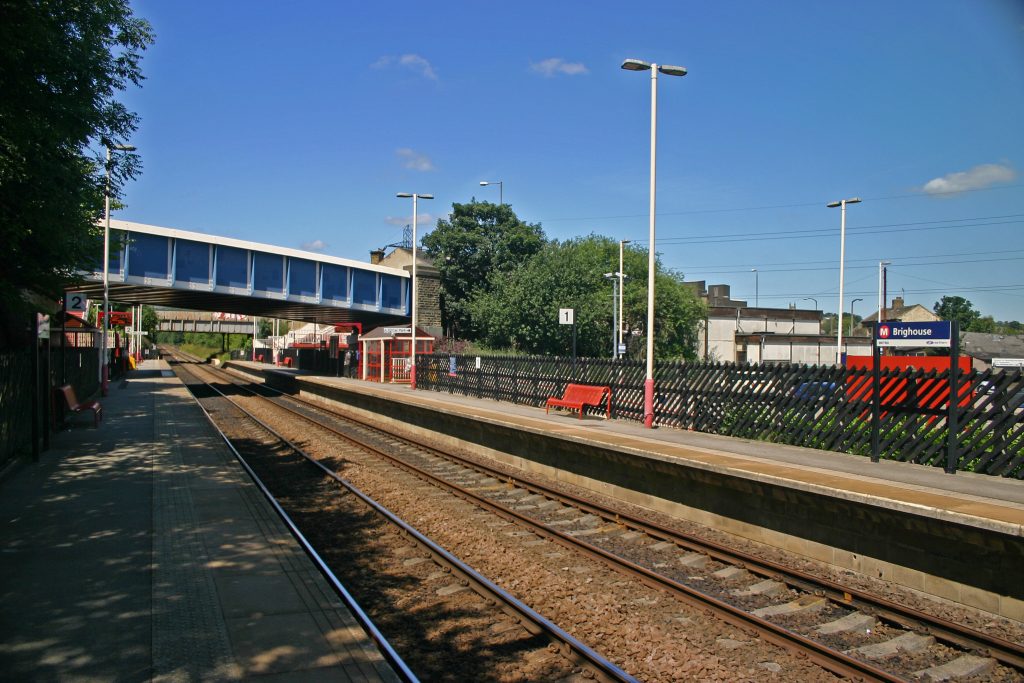
PLEASE CLICK ON THE LINK BELOW
